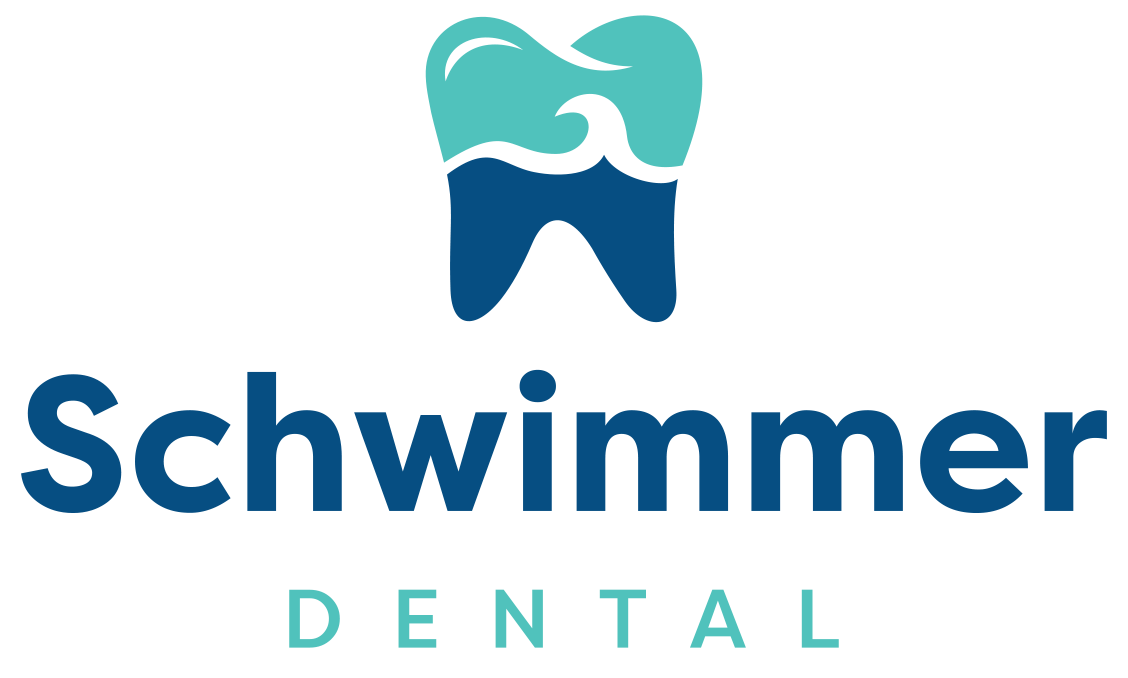Gum Line Cavity Pain? Home Remedies, Costs, and Professional Solutions
Gum line cavities are more common than most people realize, and they can sneak up on anyone—regardless of age or dental history. These cavities form where your tooth meets your gums, often causing discomfort, tooth sensitivity, and sometimes even going unnoticed until the problem becomes serious.
Whether you’re dealing with gum line cavity pain, looking for gum line cavity home remedies, or concerned about the gum line filling cost, this comprehensive guide from Schwimmer Dental in New Jersey covers everything you need to know. Let’s dive into the facts, treatments, and prevention strategies to keep your smile healthy and strong.
What Is a Gum Line Cavity?
A gum line cavity is a form of tooth decay that develops where the tooth meets the gum tissue. Unlike cavities that form on the biting surface or between teeth, gum line cavities are often associated with gum recession, exposing the softer root surface (cementum) to bacteria and acids.
- Location: Can occur on the outer or inner surfaces of any tooth, but are especially common in areas where gums have receded.
- Types: May be classified as smooth surface cavities (above the gum line) or root cavities (below the gum line).
Why Do Gum Line Cavities Happen?
Understanding the causes of gum line cavities is crucial for prevention and effective treatment:
- Plaque Buildup: Bacteria in plaque produce acids that erode enamel and cementum, especially along the gum line.
- Gum Recession: As gums recede, they expose the softer root surfaces, making them more vulnerable to decay.
- Aggressive Brushing: Using a hard-bristled toothbrush or brushing too forcefully can wear down enamel and irritate gums.
- Diet: Frequent consumption of
acidic foods and drinks (like citrus, soda, and sports drinks) can erode enamel and gum tissue.
- Dry Mouth: Reduced saliva flow limits the mouth’s ability to neutralize acids and wash away bacteria.
- Aging: Natural enamel wear and gum recession increase with age.
- Poor Oral Hygiene: Infrequent brushing and flossing allow plaque and tartar to accumulate at the gum line.
Recognizing the Signs: Symptoms of Gum Line Cavities
Gum line cavities can be tricky to spot, especially in the early stages. Watch for these signs:
- Sensitivity to Hot, Cold, or Sweets: A common early warning sign.
- Discoloration: White spots or brown lines near the gum line.
- Swollen or Bleeding Gums: Especially around a specific tooth.
- Mild or Sharp Pain: Gum line cavity pain may be intermittent or constant.
- Persistent Bad Breath: Even with good oral hygiene.
- Visible Holes or Pits: Especially if you notice a hole in tooth near gum line no pain.
Tooth Erosion at Gum Line Treatment Options
Treatment depends on the extent and location of the cavity:
Early-Stage Decay
- Remineralization: Application of fluoride varnish or prescription fluoride to halt and reverse early decay.
- Improved Oral Hygiene: Brushing with fluoride toothpaste and flossing daily.
Advanced Decay Above the Gum Line
- Fillings: Removal of decayed material and placement of a composite resin or amalgam filling.
- Class V Fillings: Specifically designed for cavities near the gum line, restoring both function and appearance.
Decay Below the Gum Line
- Root Canal Therapy: If decay reaches the pulp, a
root canal may be necessary to remove infection and save the tooth.
- Crown Placement: For extensive damage, a crown may be placed to protect the tooth after a root canal.
- Gum Therapy: Scaling, root planing, or minor surgical procedures may be needed to address gum disease and restore gum health.
Gum Line Cavity Home Remedies: What Works and What Doesn’t
While professional treatment is essential for most gum line cavities, some home remedies may offer temporary relief or help prevent further decay:
Evidence-Based Home Remedies
- Saltwater Rinses: Reduces bacteria and soothes gum tissue.
- Clove Oil: Contains eugenol, which can numb gum line cavity pain and reduce inflammation.
- Turmeric Paste: May help with inflammation when applied to the gums.
- Apple Cider Vinegar: Has antibacterial properties but should be used cautiously to avoid further enamel erosion.
Preventive Home Care
- Brush Twice Daily: Use a soft-bristled toothbrush and fluoride toothpaste.
- Floss Daily: Clean along the gum line to remove plaque.
- Limit Sugary and Acidic Foods: Reduces risk of further erosion.
- Stay Hydrated: Promotes saliva flow and natural cleansing.
What Doesn’t Work
- DIY Fillings: No home remedy can replace lost tooth structure or stop advanced decay.
- Ignoring Symptoms: Even if you have a hole in tooth near gum line no pain, untreated cavities can worsen and become more costly to fix.
Professional Gum Line Cavity Treatment: Step-by-Step
Here’s what to expect during a typical gum line cavity treatment at Schwimmer Dental:
- Examination: The dentist examines your teeth and gums, possibly taking X-rays to assess the extent of decay.
- Numbing: Local anesthesia is used to ensure comfort during the procedure.
- Decay Removal: The decayed area is carefully removed using a drill or laser.
- Filling Placement: A tooth-colored composite resin or amalgam is used to fill the cavity and restore the tooth’s shape and function.
- Finishing Touches: The filling is shaped and polished for a natural look and comfortable bite.
- Aftercare Instructions: Guidance on
oral hygiene and what to expect as the filling settles in.
Understanding Gum Line Filling Cost
The gum line filling cost can vary based on several factors:
| Filling Type | Average Cost (per tooth) | Notes |
|---|---|---|
| Amalgam (Silver) | $100–$200 | Durable, less aesthetic |
| Composite (White) | $150–$300 | Tooth-colored, more aesthetic |
| Ceramic/Gold | $400–$1000+ | Premium materials, high durability |
Factors Affecting Cost:
- Size and location of the cavity
- Type of filling material
- Additional procedures (e.g., root canal, crown)
- Geographic location and clinic expertise
Most insurance plans cover basic fillings, but it’s best to check with your provider for specifics on gum line cavity treatment coverage.
Hole in Tooth Near Gum Line No Pain: Should You Worry?
A painless hole at the gum line may seem harmless, but it still requires prompt dental attention:
- Early-Stage Decay: May not cause pain until it progresses deeper.
- Nerve Damage: If the nerve is already affected, you might not feel pain, but the risk of infection increases.
- Progression: Untreated holes can lead to deeper decay, infection, or tooth fracture.
- Costly Treatments: Early intervention is less expensive and less invasive than waiting for pain to develop.
Gumline Cavity Before and After: What to Expect
Seeing the transformation after gum line cavity treatment can be reassuring. Typically, before treatment, you may notice:
- Visible discoloration or holes near the gum line
- Swelling or redness of the gums
- Sensitivity or mild pain
After professional treatment:
- The cavity is filled, restoring the tooth’s shape and strength.
- Discoloration and visible holes are eliminated.
- Gum tissue often appears healthier, and sensitivity is reduced.
Regular dental checkups can help you track your gumline cavity before and after progress and prevent future issues.
Preventing Gum Line Cavities: Tips for a Healthier Smile
Prevention is always better than cure. Here are science-backed tips to avoid gum line cavities:
- Brush Gently but Thoroughly: Use a soft-bristled brush and fluoride toothpaste. Pay special attention to the gum line.
- Floss Daily: Removes plaque and food particles from hard-to-reach areas.
- Regular Dental Visits:
Professional cleanings and exams catch problems early.
- Limit Acidic and Sugary Foods: Reduces risk of enamel erosion and decay.
- Stay Hydrated: Promotes saliva flow, which helps neutralize acids.
- Use Mouthwash: Fluoride or antibacterial mouthwashes can provide extra protection.
- Avoid Tobacco: Smoking increases the risk of gum disease and cavities.
- Address Dry Mouth: Talk to your dentist about solutions if you experience persistent dry mouth.
How Schwimmer Dental Can Help
At Schwimmer Dental, we know that gum line cavities can be stressful and sometimes even embarrassing. Our team is dedicated to providing expert, compassionate care with a personal touch. Here’s what sets us apart:
- Advanced Diagnostics: We use cutting-edge technology to detect cavities and tooth erosion at the gum line early, ensuring prompt and precise treatment.
- Customized Treatment Plans: Whether you need a simple filling or more complex tooth erosion at gum line treatment, we tailor our approach to your unique needs.
- Gentle, Pain-Free Procedures: Our experienced team prioritizes your comfort, using the latest techniques for pain-free gum line cavity treatment—even if you’re nervous about dental visits.
- Transparent Pricing: We provide clear information on gum line filling cost and work with your insurance to maximize benefits.
- Comprehensive Care: From gum line cavity home remedies advice to full restorative dentistry, we’re your partners in lifelong oral health.
- Before & After Support: We track your gumline cavity before and after progress and provide guidance to prevent future issues.
Ready to experience the Schwimmer Dental difference? Let us help you restore your smile and confidence today.
Conclusion: Your Next Step to a Healthier Gum Line
Gum line cavities can sneak up on anyone, but with the right knowledge and professional care, you can prevent, treat, and recover from this common dental issue. Don’t let gum line cavity pain or the worry about gum line filling cost keep you from a healthy, beautiful smile. Early action is key—whether you have a hole in tooth near gum line no pain or are dealing with tooth erosion at gum line treatment needs, Schwimmer Dental is here to help.
Give your gum line the attention it deserves! Bring your favorite mug or water bottle to your next Schwimmer Dental visit, and we’ll show you how hydration and smart habits can protect your smile for life. Schedule your appointment today—your gums (and your grin) will thank you!
Frequently Asked Questions (FAQs)
Can a cavity at the gum line be fixed?
Yes, most gum line cavities can be fixed with professional dental treatments such as fillings, fluoride applications, or, in advanced cases, root canal therapy and crowns. Early detection and prompt treatment are key to successful outcomes.
Can gum line be restored?
Gum line restoration depends on the extent of gum recession. Mild cases can be managed with improved oral hygiene and desensitizing agents, while more severe cases may require procedures like composite restoration, gum grafts, or orthodontics to restore gum health and appearance.
Can teeth decaying at the gum line be saved?
Teeth with decay at the gum line can often be saved if treated early. Fillings, crowns, or root canal therapy may be used to restore the tooth. In severe cases where the tooth cannot be saved, extraction may be necessary, but this is rare with timely care.
How to get rid of gum cavities at home?
While gum line cavity home remedies like saltwater rinses and clove oil can provide temporary relief from gum line cavity pain, they cannot reverse established decay. Professional dental treatment is required to remove decay and restore the tooth. Good oral hygiene and regular dental visits are the best ways to prevent cavities from developing.
Sources:
- https://www.healthline.com/health/dental-and-oral-health/gum-line-cavity
- https://crest.com/en-us/oral-care-tips/cavities-and-tooth-decay/gumline-cavities-how-are-they-different/?srsltid=AfmBOoouAh0-yrgcaYIhLVn9OlhW42AQqtaA6jp33Y3GqxwxhSGXSgX0
- https://www.medicalnewstoday.com/articles/cavity-pain
- https://www.medicalnewstoday.com/articles/hole-in-tooth-no-pain
- https://www.colgate.com/en-gb/oral-health/cavities/what-is-a-gumline-cavity
- https://www.webmd.com/oral-health/receding_gums_causes-treatments
- https://adalyadentalclinic.com/cost-of-tooth-filling/
- https://www.medicalnewstoday.com/articles/312992
- https://www.healthline.com/health/dental-and-oral-health/how-to-get-rid-of-cavities



